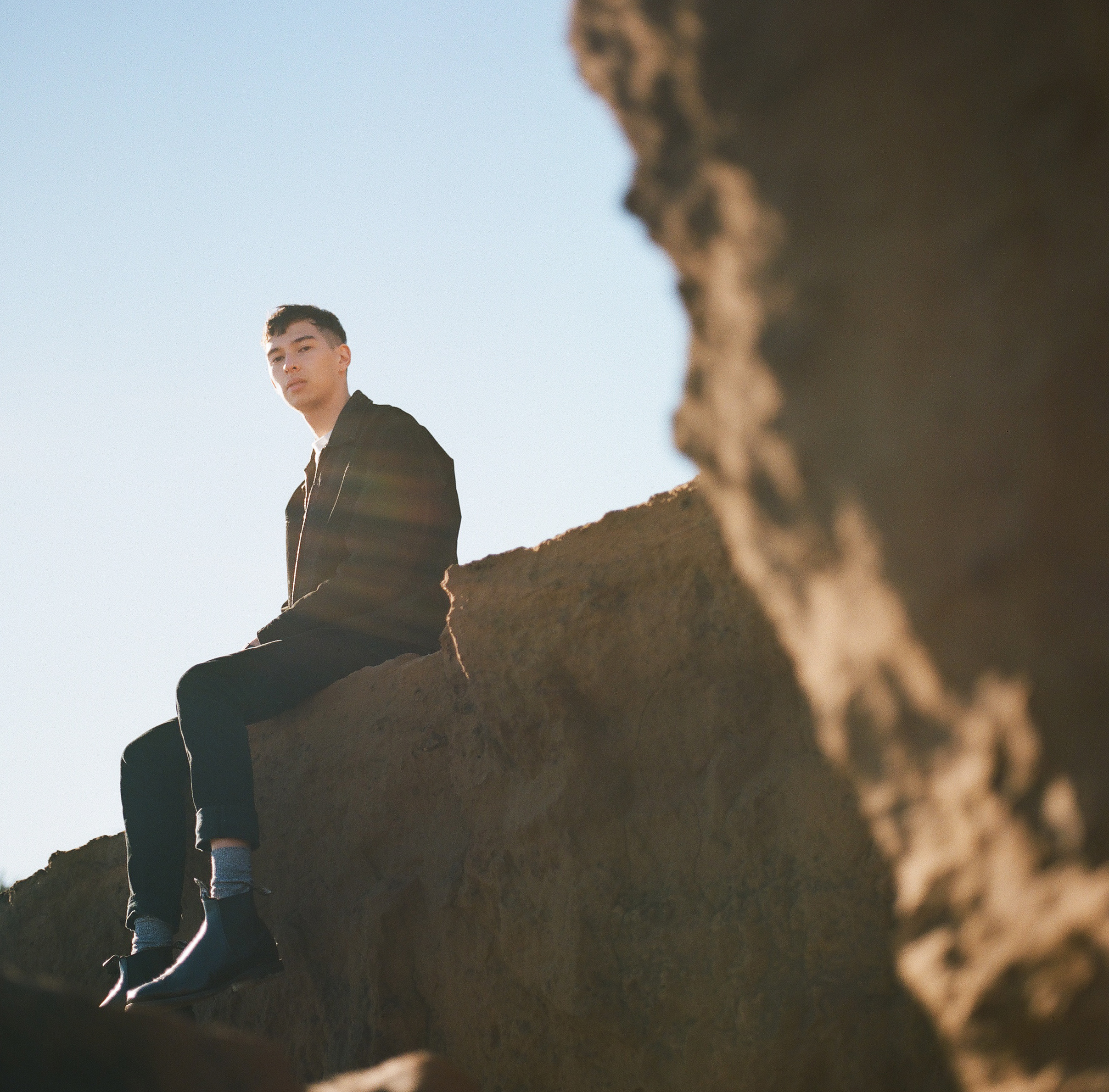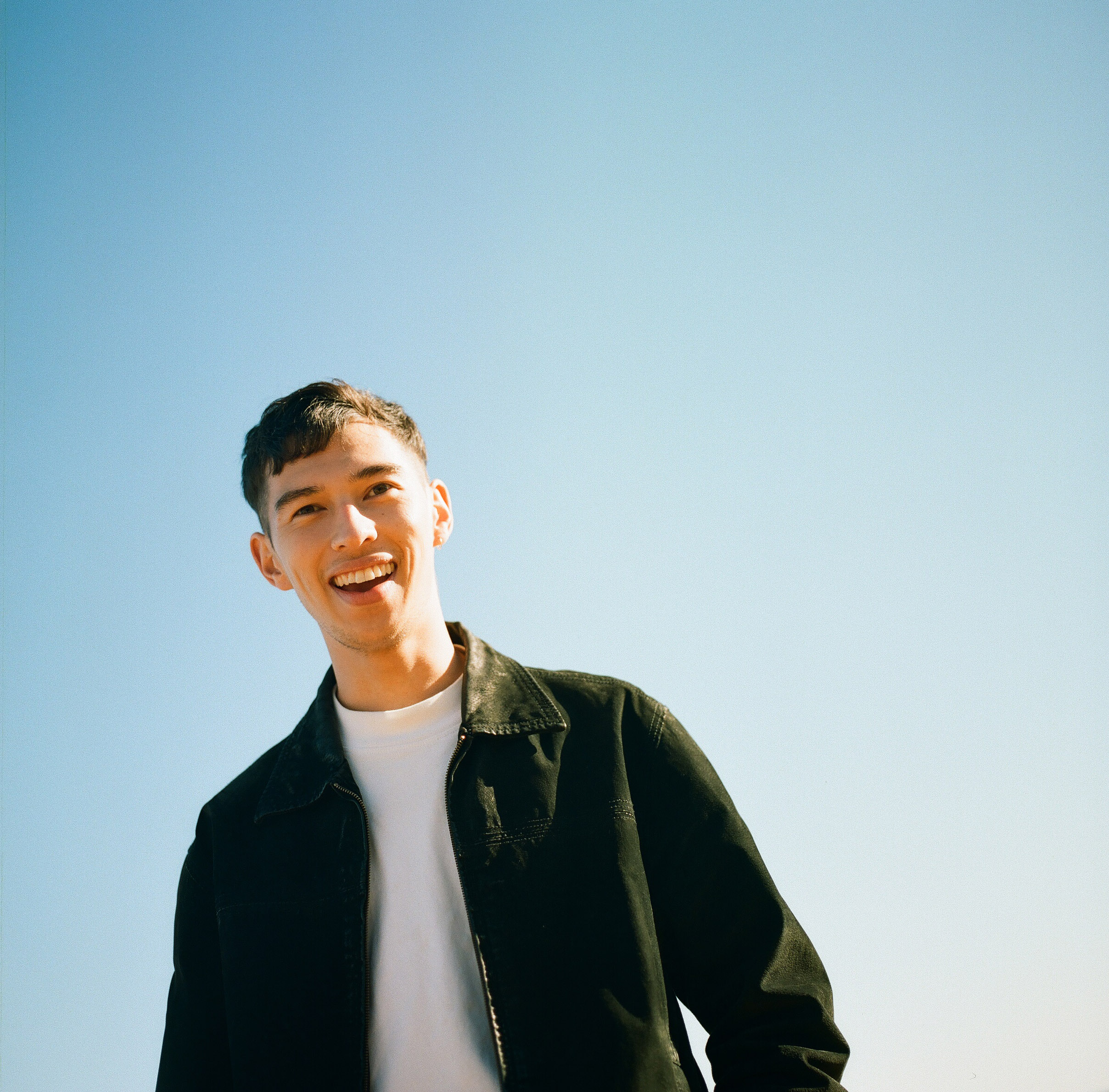Interview #40 — Lachy Siu
by Leah Jing McIntosh
Lachy Siu is freelance graphic designer and art director working primarily across print, branding and UX design. In 2017 he was shortlisted for the Inaugural Cornish Family Prize for Art & Design Publishing and the Australian Photo Book of the Year for his work on Drew Pettifer’s Some Want Quietly.
Lachy has worked on projects for the Sydney Opera House, Kaldor Arts, and is also a co-owner of Etcetera Press with Alan Weedon.
Lachy spoke to Leah Jing McIntosh about the inextricable intersections of identity, the failures of Australia’s euro-colonial aesthetic, and what makes good design.
How did you find your way to becoming a designer?
My introduction to creating things started with destruction. From an early age, I had a fascination with building and taking things apart. I had toys, but I had a strong fascination with all the circuits, wires and little bobbly bits — all internal electronics. My dad worked in a large office building and would sneak home old, out-of-use computers which I would then go ham on with hammers and screwdrivers, just so I could see what was inside. I had no idea what they did, or how it all worked, but marveled in the fact they existed in the first place. Looking back on it now, children traditionally learned and explored outside in the dirt or in the garden, I had the same experience —just with technology.
Describe your design aesthetic.
For the first couple of years of my design career, I vehemently denied that I had an aesthetic and held the opinion that those who did used it as a crutch—that they weren’t able to arrive at a purist response to their design problem. I acknowledge now that this attitude was probably more to do with a lack of confidence, and a desire to create some controlled space between myself and what I was creating. It can be very hard putting your name to something, and this was a way to protect myself from criticism. I wanted so much not to be read as an artist—I tried to have my work champion functionality and balance, over superfluous decoration. I know now that you can’t separate the two and one informs the other; that emotion and comfort are inertly functional. My style is often described as quiet academic. And by that, I don’t mean its overly smart or I’m particularly educated, but the style and work I gravitate towards often draws inspiration from that of textbooks, manuals, tables and lists. My approach is very much to simplify and communicate information in digestible and beautiful ways.
Do you have a favourite project so far?
My first industry job after finishing university was at The Company You Keep in Melbourne, where I put together a newspaper for Marina Abramovic’s residency at Kaldor Arts in Sydney. As a freelancer, it was the first time that someone was giving me the responsibility (and being paid) to design something on behalf of them. I had only a few days to watch ‘The Artist is Present’, a documentary about Abramovic’s residency at MOMA, which everyone should watch if they haven’t. Needless to say, I was both starstruck and terrified.
What is your dream project?
I think as a designer the less familiar we are with what we are working on, the better. If you are really close to a subject, you bring along with you pre-conceived ideas about how they should look, how things should be. Whereas, if you are trekking into the complete unknown you are incredibly free and liberated: you can only experience the naivety of a topic you once. I’m also incredibly lucky that a huge part of my job is researching—it is my job to become an expert in fields that I didn’t know even existed. For example, I’m currently working on a brand for an ocularist, someone who creates and fits artificial eyes.
Tell us what your day looks like.
I’m lucky enough to work full time at Love + Money Agency, a creative agency in Collingwood. It normally involves me hitting the snooze button twice, throwing on whatever is clean and then just making it to work on time. Have you seen the Devil Wears Prada? I’m the Anne Hathaway in the opening credits while all the other designers are the models.
In the 21st century, perhaps courtesy of the ‘instagram era’, it seems that Australians are now paying very close attention to design.
White Australia is unique as we don’t inherently have a history of design. When Australia was first colonised, the plans and design for most of what they needed was based on what they had back home in Britain— it made sense to use familiar, existing designs and aesthetics. What this has resulted in though is a strong culture of Australians borrowing and looking for inspiration for how to solve design problems in our Western counterparts —predominantly from America and Britain. This widespread mentality to translate British design into Australian life is only now starting to be questioned and broken down. As we were never trying to solve our own problems, we lack such mastery in the fields of craft and design. No Mastery = No Cultural Respect = No Interest in Design = No Understanding of Design in Australia.
The reality is that we are starting to get more design coming out of Australia. The result is a unique blend of design styles and sensibilities that are mashed together from around the world. The Australian design aesthetic is best defined by the fact we really don’t have one at all.
Where we went really wrong was the disownment and declassification of Indigenous Australian objects and tools as important pieces of design. We classify a Japanese Katana as a design object, why not a boomerang? Same can be said about an European organ or a piano, but never a didjeridu. Instead we have decided these items are reserved for decoration and as cheap craft items that are more appropriate for souvenirs stores at airports, rather then critically important objects.
Our euro-colonial aesthetic lens has blinded us to objects that don’t fit our preconceived cultural mould, one that has been ingrained in us over the last 200 years. It has a lot to do with consumerism and the value we can only place on industrialised mass-produced goods.
What would you consider to be good design? What makes for a successful design experience?
Good design has to elicit an emotion. One thing that makes humans unique is our deeply complex ability to express and feel. When we are talking about to ‘design’ we are always talking about ‘design for humans’. Either to make our lives easier, happier, more comfortable, last longer, look better etc.
In terms of success… beauty is in the eye of the beholder. Lets put it this way, what was a better-designed object: A Chanel dress or the nuclear bomb? Which was more successful? Which one better achieved its purpose? Design is such a qualitative experience that it’s impossible to isolate from the human experience.
You come from quite a unique context: a half-asian kid born through IVF, with a separate biological mother. You also identify as queer, another liminal identity. How does this impact your experience as an Australian in 2017?
My relationship with my identity is very flexible. Growing up, I had the opposite of a nuclear family, Born through IVF, only child, half-Chinese, came out at sixteen, parents divorced, two half-brothers, biological mother was adopted, and my father has an English foster family. People often toot that ‘family is what you make it’ but I never had a standard to compare it to, it just was what it was.
A response to this question two years ago would be very different from the one now. Back then, I was still very much building my identity, and even more so, a house for my identity to exist in. Although I have a lot of passing white privilege as half Euro/Chinese, I wasn’t immune to growing up surrounded by ‘stereotypical white Australian culture’ and the representation of what people would look like portrayed in the media. Growing up I worried an awful lot about the way I looked, I was super skinny, straight black hair, tan skin, all the regular internalised insecurities that are often just the reality of growing up with a liminal identity in Australia. On the flipside, I equally didn’t identify with my Hong Kong heritage, as my father had been living in London since the age of thirteen. He doesn’t have many strong ties to his heritage so there wasn’t an opportunity for me to inherit or learn from that experience.
My Asian identity, my Australian identity, my queer identity really all roll into one, it’s impossible for me to say when one starts and they other begins—they react to each other.
You created a great poster for the Meyers Place Art Space, which reads: ‘Rapists, Murderers, Children Abusers, Wife Beaters, Pedophiles, Gold Diggers… Welcome to 2017, When these guys can get married and same sex couples can’t’. Thank god the message is finally irrelevant! How has the plebiscite and following Same-sex marriage bill impacted you?
As for everyone in the community it has been exhausting, mostly due to having to repeat myself to straight and cisgendered people about why it was so incredibly hurtful to have a vote in the first place. People often ask me now if I want to get married in Australia, my response is leaning towards a no, it may change in the future.
My general feelings towards marriage are—why should I now have the right to do something just because somebody who doesn’t even knows me says its so? I don’t need permission to express love in the way that I choose.
Any POC artists should we be watching?
Florence Li Ting Fong, James J. Robinson, Amxander.
Do you have any advice for emerging designers?
Don’t generalise, specialise. Work out what you do really well and then do it even better. Ask your communities for advice and jobs, I have always been surprised by the generosity of others if you simply ask.
Who are you inspired by?
All my clients who trust me to bring their projects to life, my family.
What are you currently listening to?
Yellow Magic Orchestra.
What are you currently reading?
Le Roy magazine.
How do you practice self-care?
When Connoisseur icecream goes half price at Coles.
What does being Asian-Australian mean to you?
Being liberated from any an all expectations of what people expect to me to be. To be able to constantly change without feeling liable to past versions of myself.
Find out more
Interview & photographs by Leah Jing McIntosh






